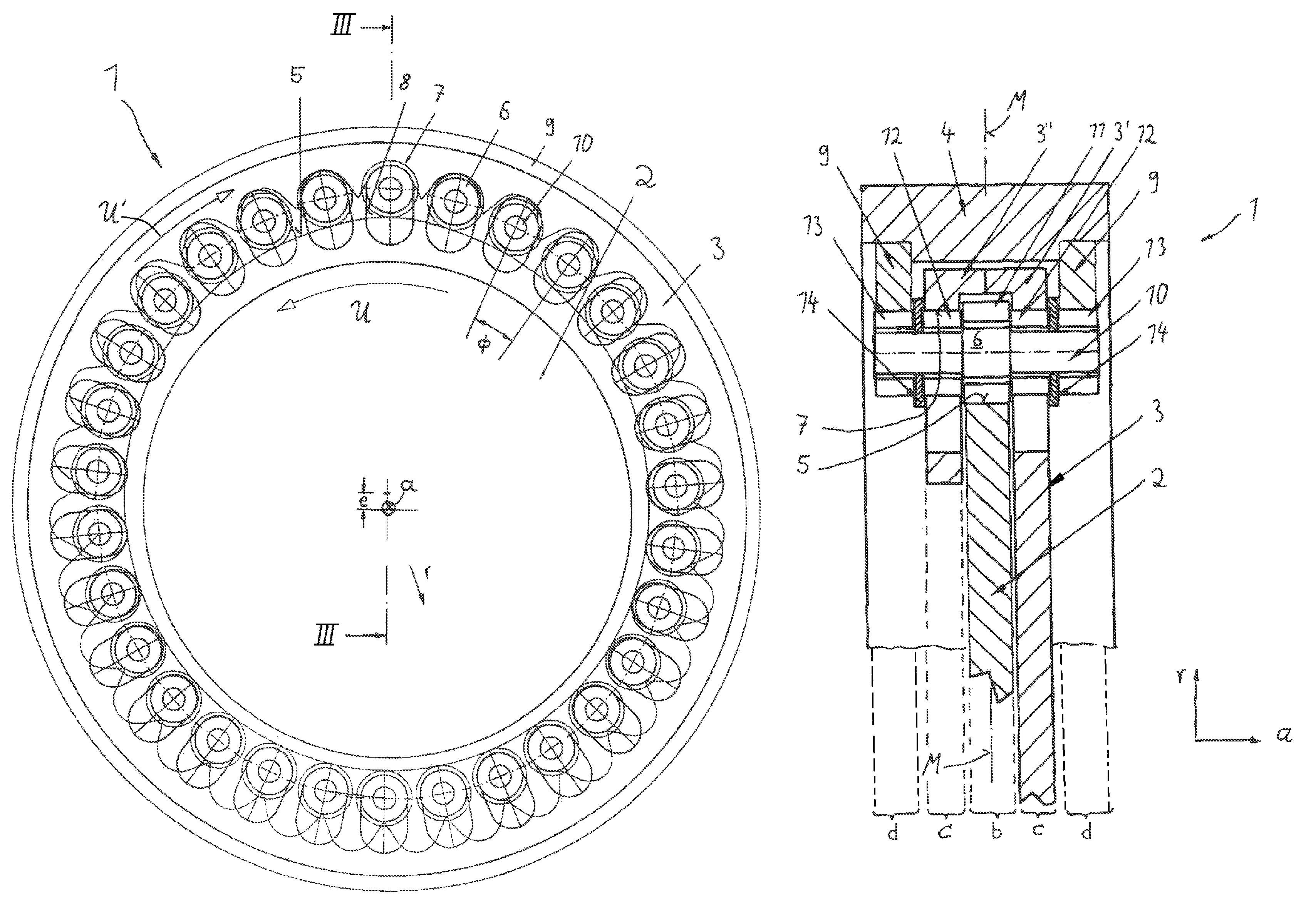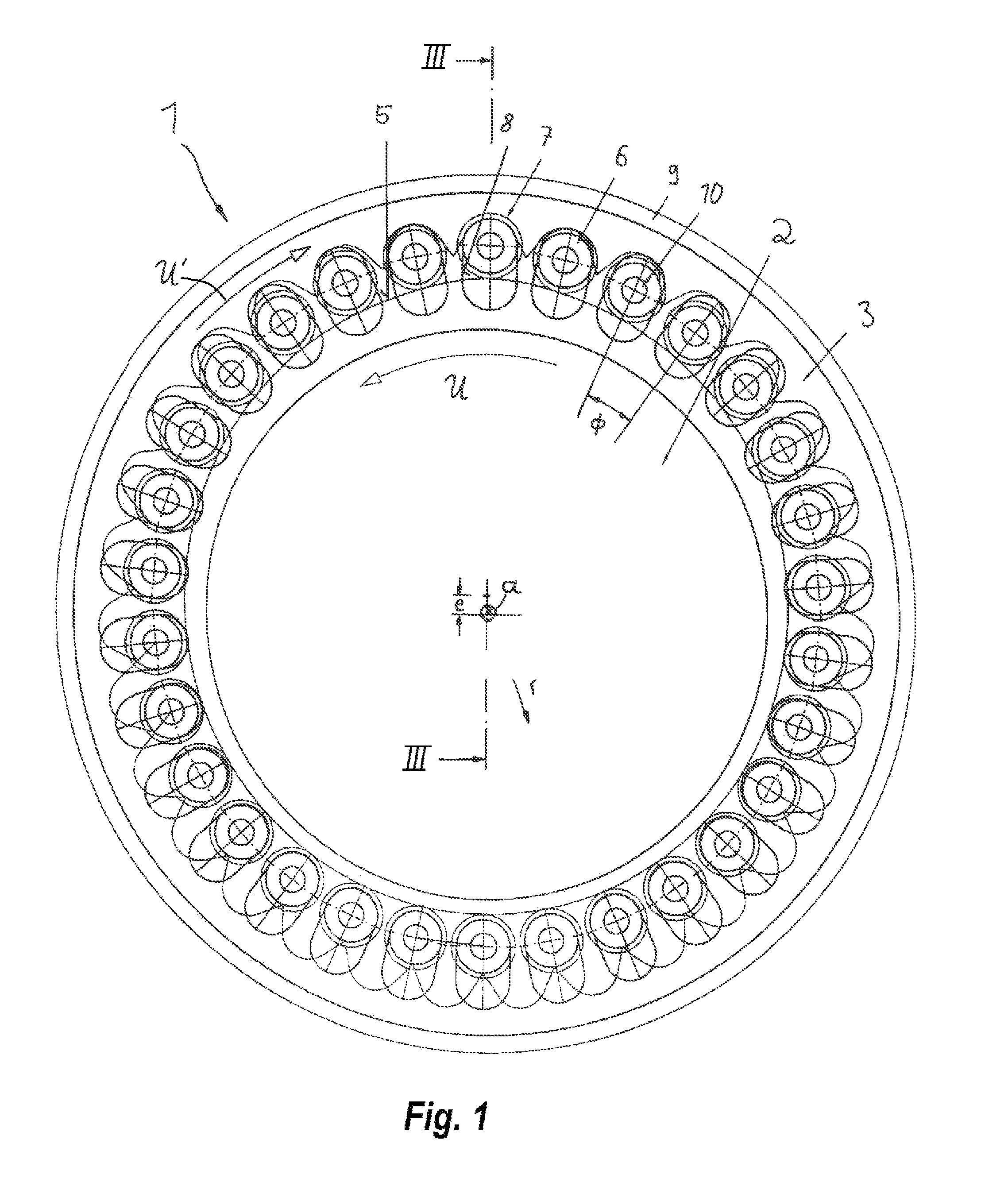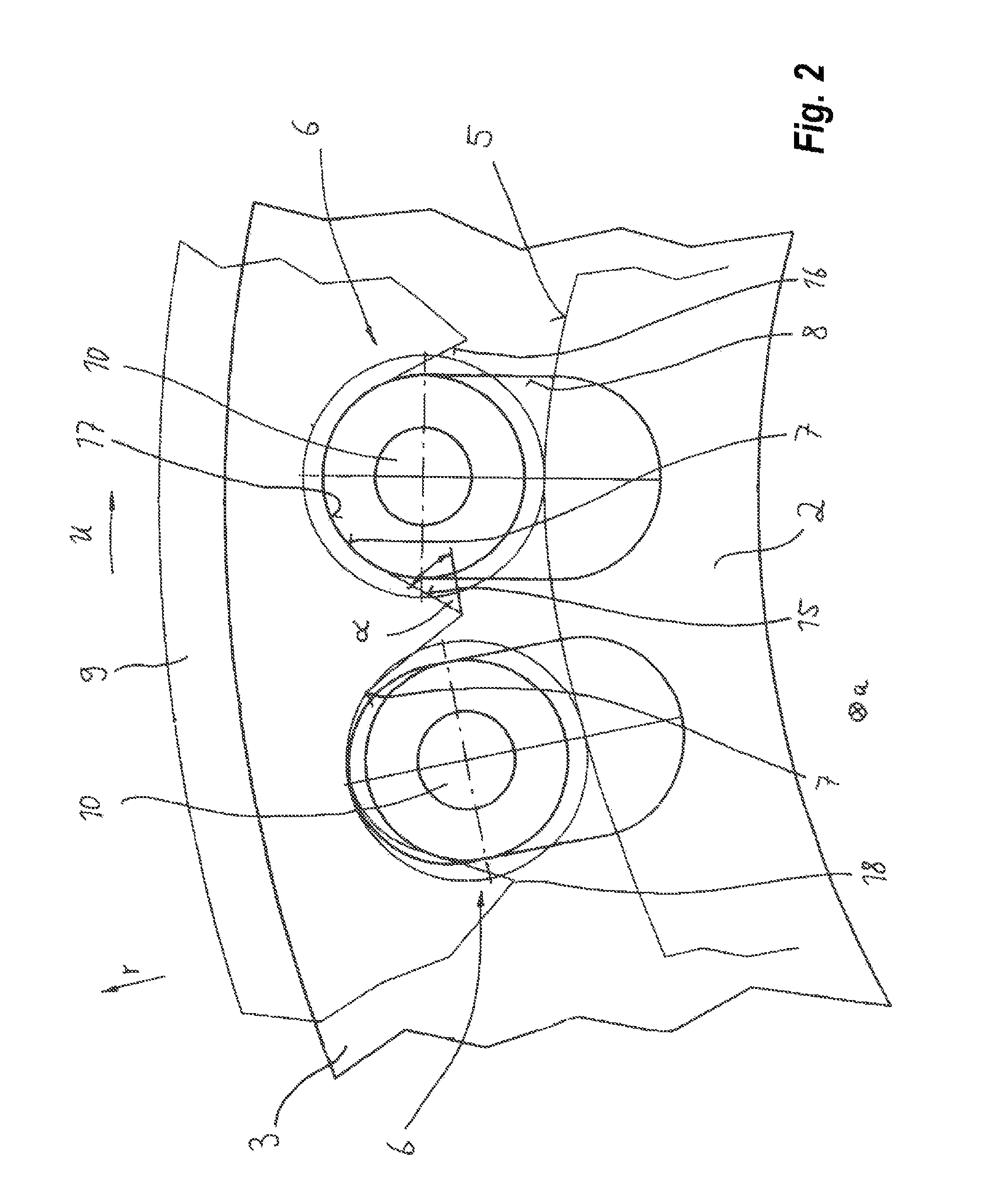Rotary speed-change transmission
a rotary transmission and speed-change technology, applied in the field of transmission, can solve the problems of high construction effort and device technical complexity, unsuitable heavy machinery, and high transmission costs, and achieve high transmission ratio, compact design, and high torque.
- Summary
- Abstract
- Description
- Claims
- Application Information
AI Technical Summary
Benefits of technology
Problems solved by technology
Method used
Image
Examples
Embodiment Construction
[0028]As seen in the drawing, a transmission 1 for use in heavy machinery for transmitting high torque at a high transmission ratio has a drive or input element 2 to which an unillustrated drive shaft can be fixed and a driven or output element 3 to which an unillustrated output shaft is also rotationally fixed. The input element 2 and the output element 3 rotate about a common axis a that here is perpendicular to the view planes of FIGS. 1 and 2.
[0029]The input element 2 is a disk and the output element 3 is largely annular. Both the input element 2 and the output element 3 are rotatably mounted in a normally nonrotating housing 4 (FIG. 3). Bearings that support them in the housing 4 are not shown and are standard.
[0030]The input element 2 has a radially outwardly directed peripheral edge surface 5 that is basically cylindrical serves as a guide for transmission elements 6 described in greater detail below. This guide surface 5 is offset upward in FIG. 1 by an eccentricity e to the...
PUM
 Login to View More
Login to View More Abstract
Description
Claims
Application Information
 Login to View More
Login to View More - R&D
- Intellectual Property
- Life Sciences
- Materials
- Tech Scout
- Unparalleled Data Quality
- Higher Quality Content
- 60% Fewer Hallucinations
Browse by: Latest US Patents, China's latest patents, Technical Efficacy Thesaurus, Application Domain, Technology Topic, Popular Technical Reports.
© 2025 PatSnap. All rights reserved.Legal|Privacy policy|Modern Slavery Act Transparency Statement|Sitemap|About US| Contact US: help@patsnap.com



